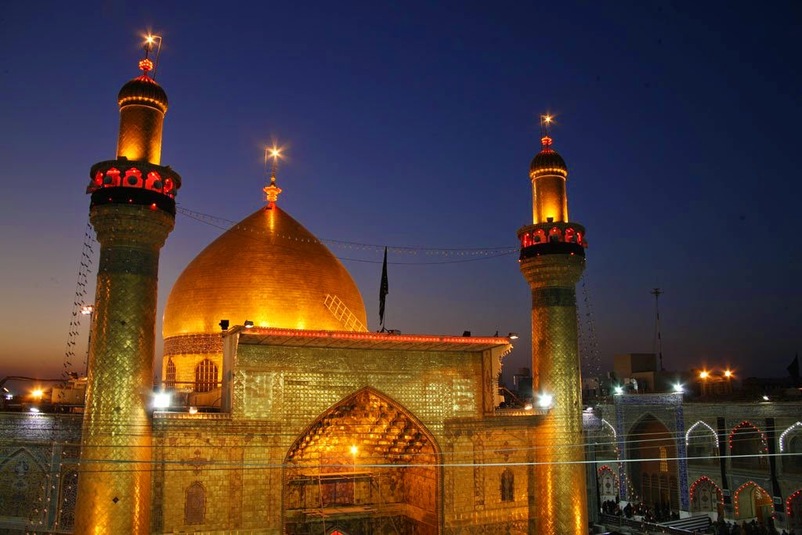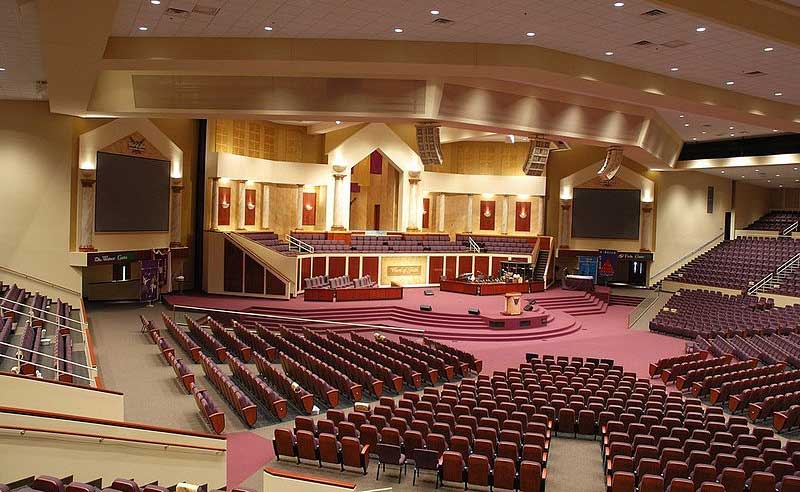Shiite Islam Meaning and Definition
Shīʿite, Shiʿi, Shiite Islam, Arabic Shīʿī, also called Shiʿite, collective Shiʿah or Arabic Shīʿah, member of the smaller of the two major branches of Islam, the Shiʿah, distinguished from the majority Sunnis Which resulted from the first fitnah, or split, within the religion over leadership. Members of the political faction that supported ʿAlī, Muhammad’s son-in-law, as the Prophet’s heir after the murder of the third caliph, ʿUthmān, the Shīʿites gradually became a religious movement after the murder of ʿAlī.
ʿAlī’s followers insisted that a caliph, or imam, be a lineal descendant of ʿAlī and his wife, Fāṭimah. Shīʿite legal tradition is distinct from the four major schools of thought in Sunnite Islam and is generally regarded as the most conservative. Though Shīʿites represent only about 10% of Muslims in the world, they are a majority in Iran and Iraq, and there are sizable populations in Yemen, Syria, Lebanon, East Africa, Pakistan, and northern India. The largest subdivision is the Ithnā ʿAshariyyah, or Twelvers, who recognized 12 historical imams (including ʿAlī); other subsects include the Ismāʿīliyyah and the Zaydiyyah.

The Emergence Of The Shiite Islam and Shiite History:
The origins of the split between the Sunnis and the Shiite Islam lie in the events which followed the death of the Prophet Muhammad. Muhammad was understood to be the messenger of God who, in the early 7th century CE, commenced to proclaim the Qurʾān, the sacred scripture of Islam, to the Arabs. In the 620s Muhammad and his followers were driven from his hometown of Mecca and settled in Medina. About a decade later, when he appeared at Mecca with a large army, the Meccans surrendered the city to him. In 632 the Prophet became ill and died. Muhammad’s role as God’s messenger was the basis of his political and military authority.
The earliest sources agree that on his deathbed Muhammad did not formally designate a successor or make public a succession plan. Some members of the ummah (Muslim community) held that God had intended for that spiritual link, and the political and military authority associated with it, to continue via Muhammad’s family. Thus, they held, ʿAlī ibn Abī Ṭālib the Prophet’s cousin and son-in-law should have been the Prophet’s immediate successor and, thereafter, members of ʿAlī’s family. Others, however, maintained that with Muhammad’s death the link between God and humankind had ended and the community was to make its way forward.
During these years the family of the Prophet (Ahl al-Bayt) continued to be the focus of attention for alternative leadership among those within the ummah who were upset with several aspects of Umayyad rule. One such aspect, for example, was the acceptance of non-Arab converts to Islam (called mawālī) drawn from among Iranians, Turks, Egyptians, Indians, Aramaeans, and other non-Arabs. The mawālī, even after their conversion, were still required to pay the head or “poll” tax (jizyah) required of non-Muslims. They also paid a higher rate of land tax (kharāj).
The number of mawālī grew as the empire expanded, and many were settled in Iraq, especially in Kūfah. Tribal elements from southern Arabia where, before Islam, dynasty-based kingly succession had been common also were sympathetic to the notion that the Prophet’s family should continue to have a special role in the life of the ummah.
Indeed, the Qurʾān itself, collected and collated only during the reign of ʿUthmān, contained references to the special place of the families of prophets previously sent by God. The term Ahl al-Bayt, which refers to Muhammad’s family, in particular, appears in Qurʾān 33:33, for example. In various authoritative statements (Hadith) ascribed to the Prophet, Muhammad himself spoke of special roles for ʿAlī in the life of the community. Some Sunni collections of the Prophet’s statements include the report that Muhammad stated that he was leaving behind “two precious things” (thaqalayn) that, if followed, would produce no errors: the first was the Qurʾān itself and the second was Ahl al-Bayt.
Shiite Islam sources also say that the Prophet designated ʿAlī his successor at Ghadīr Khumm in 632 when he said, “Whoever takes me as his mawlā, ʿAlī shall be his mawlā.” The exact meaning of mawlā in this saying and whether it refers to a leadership role remains a matter of dispute.
At ʿAlī’s death, some of his supporters, therefore, transferred their allegiance to ʿAlī’s two sons through Fāṭimah, the Prophet’s daughter. His son Ḥasan abandoned any efforts to promote his caliphate. In the aftermath of Muʿāwiyah’s death in April/May 680, ʿAlī’s younger son, Ḥusayn, refused to pledge fealty to Muʿāwiyah’s son and successor Yazīd. At the request of supporters in his father’s capital city of Kūfah, Ḥusayn left Arabia for that city. Nevertheless, the Kufans failed to rally to Ḥusayn’s cause as he and his small band of followers approached the city.
The Prophet’s grandson and most of his retinue were killed by Umayyad forces at Karbala, now also in Iraq, in October 680.
Following the death of Ḥusayn, Kūfah witnessed a series of anti-Umayyad Shiʿi risings. In 685 al-Mukhtār ibn Abī ʿUbayd al-Thaqafī, a nephew of one of ʿAlī’s governors, rose to proclaim Muḥammad ibn al-Ḥanafiyyah ʿAlī’s only remaining son by a later wife, Khawlah bint Jaʿfar al-Ḥanafiyyah as imam (spiritual and political leader) and as the messianic figure called the mahdī. Al-Mukhtār’s identification of Ibn al-Ḥanafiyyah as the mahdī marked the first use of that term in a messianic context. After some initial victories, al-Mukhtār’s rising was crushed in 687. Ibn al-Ḥanafiyyah himself died in 700–01. Some maintained, however, that he had not died and was in occultation (ghaybah) that is, alive but not visible to the community.
The Zaydi Shiʿah And The ʿAbbāsids:
Mawālī and South Arabian tribal elements were among Muḥammad’s supporters, but they also supported a series of later uprisings centered on the Prophet’s family that occurred in the region into the 8th century.
One of these risings was led by Zayd ibn ʿAlī, a half-brother of ʿAlī’s great-grandson Muḥammad al-Bāqir by ʿAlī’s son Ḥusayn. In 740, encouraged by Kufan elements, Zayd rose against the Umayyads, on the principle that the imam could lay claim to leadership only if he openly declared himself imam. Zayd fell in battle, but his son Yaḥyā escaped to northeastern Iran. Later captured and released, he was killed in 743 after launching a further anti-Umayyad rising in Herat. The Zaydis survive today, mainly in Yemen, and are the third largest of the three still extant Shiite Islam groups, after the Twelver and Ismāʿīliyyah sects.
Another movement, the ʿAbbāsids, launched a propaganda campaign about 718 that took advantage of currents desiring to replace the Umayyads with the Prophet’s family. Its focus was not on ʿAlī’s family, however, but on ʿAbbās ibn ʿAbd al-Muṭṭalib, an uncle of the Prophet. With much support from the mawālī and supporters of ʿAlī’s family, the ʿAbbāsids succeeded in unseating the Umayyads in 750.
The ʿAbbāsid dynasty went on to empower the mawālī but abandoned loyalists to ʿAlī’s family, whose ideological leanings might challenge the legitimacy of the dynasty. Thus, while the ʿAbbāsid movement initially excited Shiite Islam sentiments, it ultimately rejected and suppressed the faction. After a glimmer of hope, some of the Shiʿah reasserted the understanding that the leadership of the ummah could only lay with a particular member of ʿAlī’s family.
The Growth Of Imāmī Shiʿism:
As the Zaydis and the ʿAbbāsids sought leadership from members of the Prophet’s family who would assert it, many of the Shiʿah were embracing the idea that leadership of the community could not be earned but must be inherited by divine designation. Some movements focused on other male descendants of ʿAlī’s sons Ḥasan and Ḥusayn and venerated them as heirs of the spiritual and political mantles of the Prophet.
Some of these movements appear to have endowed Ḥasan and Ḥusayn with near-divine powers, while others saw Muhammad and, therefore, Ḥasan and Ḥusayn as possessing superhuman knowledge. At the deaths of Ḥasan and Ḥusayn, their adherents fragmented to follow their offspring or other descendants.
At the death of the fifth imam, Muḥammad al-Bāqir, his son Jaʿfar, whose life spanned both the Umayyad and ʿAbbāsid periods, was accepted by many as the imam. Sunni elements also accepted Jaʿfar as a jurist and narrator of Hadith. At Jaʿfar’s death, the Shiʿah fragmented again into several groups. Some believed he had not died but was in occultation and would return. Others held that the imamate had passed through imam Jaʿfar’s son Ismāʿīl, who had predeceased his father.
The latter group, who came to be called “Seveners,” held that Ismāʿīl was the last imam and that, as some had believed of Jaʿfar, he had not died but was in occultation and would return. Others held that the imamate had passed to Ismāʿīl’s son Muḥammad and that he, too, had not died and would someday return to the community. Still, others maintained that Jaʿfar’s successor was Mūsā al-Kāẓim, another son of imam Jaʿfar.
Beliefs Of Shiite Islam:
The profession of faith (Shahada):
The Shiite Islam a version of the Shahada, the Islamic profession of faith, differs from that of the Sunnīs. The Sunnī version of the Shahada states “There is no god except God, Muhammad is the messenger of God”, but to this declaration of faith Shīʿa Muslims append the phrase Ali-un-Waliullah (علي ولي الله: “ʿAlī is the Wali (custodian) of God”).
This additional phrase to the declaration of faith embodies the Shīʿa emphasis on the inheritance of authority through Muhammad’s family and lineage. The three clauses of the Shīʿa version of the Shahada thus address the fundamental Islamic beliefs of Tawḥīd (unity and oneness of God), Nubuwwah (the prophethood of Muhammad), and Imamah (the Imamate, leadership of the faith).
Infallibility (Ismah):
Ismah is the concept of infallibility or “divinely bestowed freedom from error and sin” in Islam. According to Shīʿa Muslim theologians, infallibility is considered a rational, necessary precondition for spiritual and religious guidance. They argue that since God has commanded absolute obedience from these figures, they must only order that which is right.
The state of infallibility is based on the Shiite Islam interpretation of the verse of purification. Thus, they are the purest ones, the only immaculate ones preserved from, and immune to, all uncleanness. It doesn’t mean that supernatural powers prevent them from sinning, but because they have absolute belief in God, they refrain from doing anything that is a sin.
They also have complete knowledge of God’s will. They have all knowledge brought by the angels to the prophets (nabī) and the messengers (rāsūl). Their knowledge encompasses the totality of all times. Thus, they are believed to act without fault in religious matters. Shiite Muslims regard ʿAlī ibn Abī Ṭālib as the successor of Muhammad not only ruling over the entire Muslim community in justice, but also interpreting the Islamic faith, practices, and its esoteric meaning. Hence he was regarded as being free from error and sin (infallible), and appointed by God by divine decree (nass) to be the first Imam. ʿAlī is regarded as a “perfect man” (al-insan al-Kamil) similar to Muhammad, according to the Shīʿa viewpoint.
Occultation (Ghaybah):
The Occultation is an eschatological belief held in various denominations of Shiite Islam a concerning a messianic figure, the hidden and last Imam known as “the Mahdi”, that one day shall return to Earth and fill the world with justice. According to the doctrine of Twelver Shīʿīsm, the main goal of Imam Mahdi will be to establish an Islamic state and to apply Islamic laws that were revealed to Muhammad.
The Quran doesn’t contain verses on the Imamate, which is the basic doctrine of Shīʿa Islam. Some Shīʿa subsects, such as the Zaydī Shīʿas and Nizārī Ismāʿīlīs, don’t believe in the idea of the Occultation. The groups which do believe in it differ as to which lineage of the Imamate is valid, and therefore which individual has gone into Occultation. They believe many signs will indicate the time of his return.
Twelver Shīʿa Muslims believe that the prophesied Mahdi and twelfth Imam, Hujjat Allah al-Mahdi, is already on Earth in Occultation, and will return at the end of time. Ṭayyibi Ismāʿīlīs and Fatimid/Bohra/Dawoodi Bohra believe the same but for their 21st Ṭayyib, At-Tayyib Abi l-Qasim, and also believe that a Da’i al-Mutlaq (“Unrestricted Missionary”) maintains contact with him. Sunnī Muslims believe that the future Mahdi has not yet arrived on Earth
Holy Relics (Tabarruk):
It is believed that the armaments and sacred items of all of the prophets, including Muhammad, were handed down in succession to the Imams of the Ahl al-Bayt. Jaʿfar al-Ṣādiq, the 6th Shīʿīte Imam, in Kitab al-Kafi mentions that “with me are the arms of the Messenger of Allah. It is not disputable.”
Further, he claims that with him is the sword of the Messenger of God, his coat of arms, his Lamam (pennon), and his helmet. In addition, he mentions that with him is the flag of the Messenger of God, the victorious. With him is the Staff of Moses, the ring of Solomon, son of David, and the tray on which Moses used to offer his offerings. With him is the name that whenever the Messenger of God would place it between the Muslims and pagans no arrow from the pagans would reach the Muslims. With him is the similar object that angels brought.
Al-Ṣādiq also narrated that the passing down of armaments is synonymous with receiving the Imamat (leadership), similar to how the Ark of Covenant in the house of the Israelites signaled prophethood. Imam Ali al-Ridha narrates that wherever the armaments among us would go, knowledge would also follow and the armaments would never depart from those with knowledge (Imamat).
Practices Of Shia:
Shiite Islam religious practices, such as prayers, differ only slightly from the Sunnīs. While all Muslims pray five times daily, Shīʿa Muslims have the option of combining Dhuhr with Asr and Maghrib with Isha’, as there are three distinct times mentioned in the Quran. The Sunnīs tend to combine only under certain circumstances.
Holy Sites Of Shiite Islam:
After the four holy cities of Islam (Mecca, Medina, Jerusalem, and Damascus), the cities of Najaf, Karbala, and Qom are the most revered by Shīʿa Muslims. The Sanctuary of Imām ʿAlī in Najaf, the Shrine of Imam Ḥusayn in Karbala, and the Shrine of Fāṭimah al-Maʿṣūmah in Qom are very essential for Shiite a Muslims. Other venerated pilgrimage sites include the Imam Reza shrine in Mashhad, the Kadhimiya Mosque in Kadhimiya, Al-Askari Mosque in Samarra, and the Sahla Mosque, the Great Mosque of Kufa, the Jamkaran Mosque in Qom, and the Tomb of Daniel in Susa.
Most of the Shiite Islam a sacred places and heritage sites in Saudi Arabia have been destroyed by the Al Saud-Wahhabi armies of the Ikhwan, the most notable being the tombs of the Imams located in the Al-Baqi’ cemetery in 1925. In 2006, a bomb destroyed the shrine of Al-Askari Mosque.
World Religions
Read also:
Qadiriyya Tariqa | Founder, History, Beliefs and More..
Sufi Religion | Practices, Whirling, Symbolism And Theosophical Sufism
Islam in Bhavishya Purana | Is It Really Predicted in Bhavishya Purana?
Sunni vs Shia | What’s the Difference Between Sunni and Shia Muslims?
Religions and Politics in Political Philosophy



